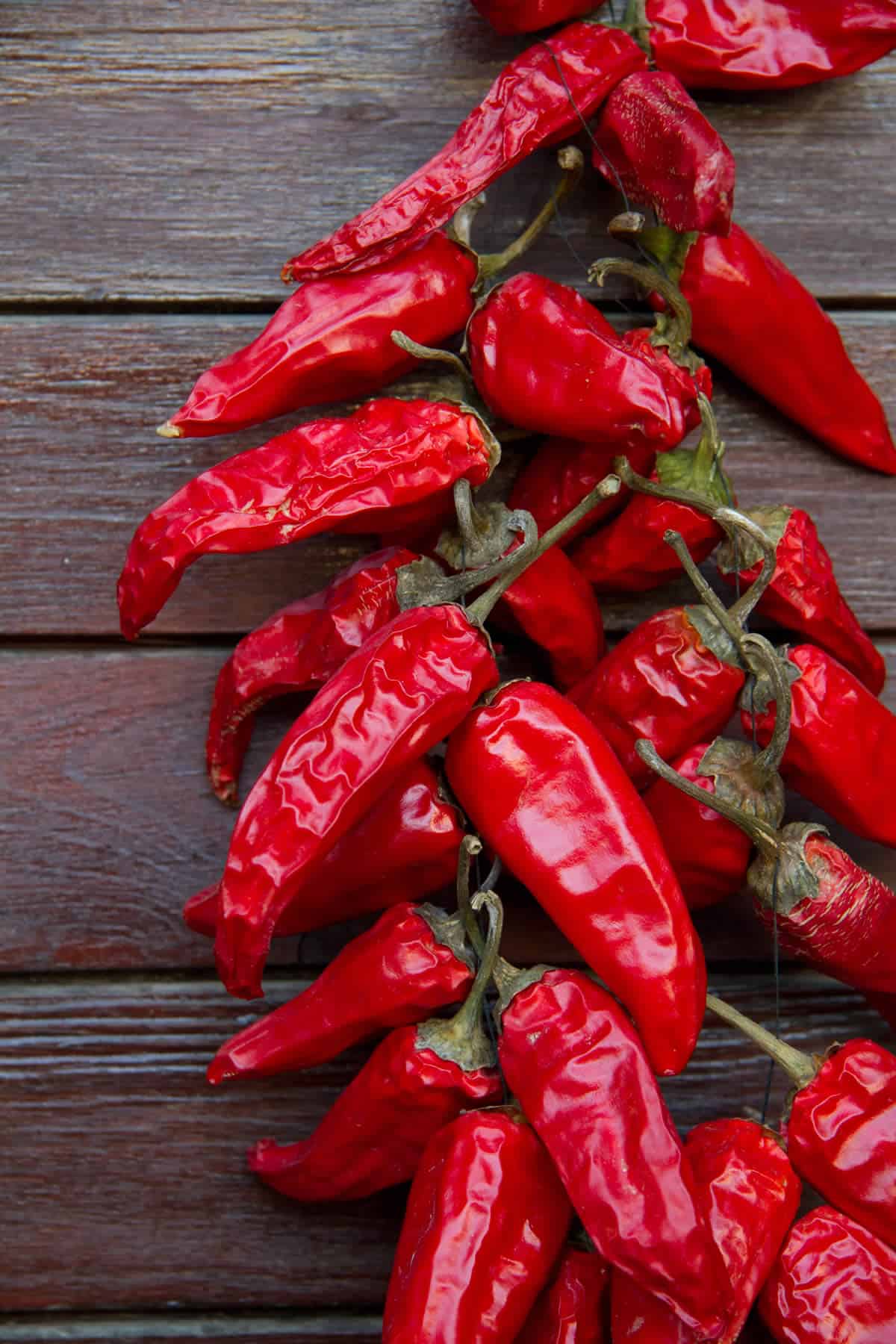When it comes to Basque cuisine, the Espelette pepper reigns supreme. The Basque country straddles the borders between France and Spain, both of which influence the area’s cooking techniques. The fact that it is flanked by the abundant sea on one side and fertile land on the other, you’ll find a diversity of dishes, from seafood and meats to beans, cheeses, ciders and wines. The Basque people were quick to adopt culinary influences, and came to adopt peppers as part of their cuisine, among other ingredients. A favorite among them is the Espelette pepper. This certification exists to protect the branding and quality of regional foods, such as wines and cheese. Champagne is a famous example. Much like “Hatch Chile Peppers” can only be called Hatch Peppers if they are grown in the Hatch region of New Mexico, Espelette peppers must be grown in the French Espelette region. Otherwise, they would be called by another name. They are popular dried as well and often sold in powder form. The peppers are cultivated in the French commune of Espelette, Pyrénées-Atlantiques, hence the name. The town of Espelette lies in the Labourd province interior and is best known for these peppers. A tour of the village would find quaint homes drying peppers from balconies, and local shops selling the peppers and other foods flavored with them. In France it is known as “piment d espelette”. The many restaurants are there to serve and delight you. As a comparison, the popular serrano pepper ranges from 10,000 SHU to 23,000 SHU. When dried and ground into a powder, you’ll notice a stronger smoky sweetness element, akin to smoked paprika. Growers follow specific specifications set forth by the trade union of Espelette peppers and treat the peppers much as wine growers treat grapes, with an eye toward growing conditions, weather patterns, soil and geology, all of which can affect the wonderful pepper flavor and aroma. There is also a dish called “piperade”, which is a famous Basque dish made with onion, peppers, tomatoes and Espelette peppers. It is much like a relish or a sauce. In the region, they can be purchased as fresh or dried peppers, as ground pepper, or puréed or pickled. There are non-AOC Espelette peppers grown and marketed in California, so you can begin your search there. If you have any questions, feel free to contact me or leave a comment below. NOTE: This page was updated on 5/11/20 to include new information and photos. It was originally published on 7/6/17.
